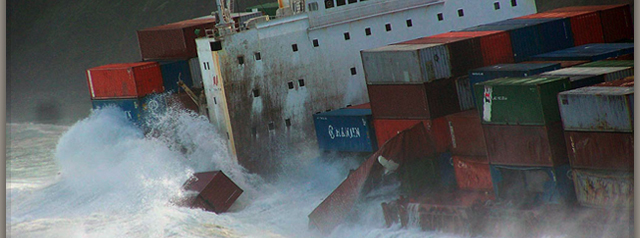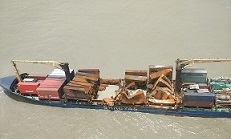Unfortunately, when shipping liquid bulk cargoes, whether petroleum products, petro-chemicals or foodstuffs, losses through shortage or contamination will inevitably occur to some degree simply due to the inherent nature of liquids. Accordingly, it would be prudent to have an appropriate excess, typically 0.5% – 1.0%.
If appropriate measures are taken at both the loading and discharge ports however, some losses can be reduced or even avoided entirely. A surveyor appointed to carry out the right procedures at each stage of the transit will serve two specific functions.
Firstly, the findings should enable one to determine whether any losses resulted from a fortuity as oppose to those stemming from inherent vice.
Secondly, where claims payable under the policy do arise, the same data should enable liability to be established in order to pursue a recovery against the responsible party.
The surveyors’ duty will be to ensure that the carriers are able to abide by the shippers’ instructions with regards to cargo handling and to satisfy himself that appropriate measures have been taken in preparation of all tanks and pipelines in readiness to receive the cargo. This will include inspections of the various tanks utilised both on shore and on board the carrying vessel/s to ensure their adequate preparation/cleaning and suitability for the cargo in question taking into account tank coatings and previous cargoes. Additionally, he should take measurements and samples at various stages of the carriage.
The various steps are listed below but we would be pleased to draw up a procedure and instructions which could be sent out with the policy.
As you will know, liquid cargoes are usually handled many times during the course of transit: from the originating shore tank to the vessel to the destination shore tank. Additionally, the cargo may undergo further transportation by road tanker at either end of the voyage or be transhipped to another vessel during the course of the voyage. At every single stage there are likely to be losses in quantity. Furthermore, every tank and facility used increases exposure to contamination from previous cargoes.
LOSS/SHORTAGE
Loss in weight will unavoidably occur as a result of “unpumpable” (residual) cargo remaining in the tanks or within pipelines. The amount concerned will partly depend on the properties of the product, the efficiency of the ship?s discharge system and even the dimensions and design of the cargo tanks. Additionally, the constituents of some substances may cause collection of sediment which may not be readily discharged.
Losses may also occur through leakage from pipes or through evaporation.
Additional shortages may occur as a result of “clingage” which is dependant on the adhesive properties of the liquid and its viscosity, causing cargo to leave a coating on tank walls and the insides of pipelines. This may be exacerbated in certain cases where the cargo thickens (or even solidifies) as a result of cooling during the course of transit, perhaps leaving a waxy residue.
It is therefore essential that liquid cargoes are heated to the appropriate temperature in order that its fluidity is maximised to ensure full discharge. Care must be taken to avoid too rapid heating which may cause deterioration (Palm oil for example may become bleached if exposed to excessive heat) or may increase losses through evaporation. In this respect, some vessels are only able to maintain a temperature but are unable to actually heat cargo and the surveyor should be instructed to carry out the necessary enquiries to ascertain the vessel?s ability to comply with shipper?s instructions.
In order to prove liability, it is essential that surveyors are appointed at each stage of the transit covered under the marine insurance policy with clear instructions to obtain accurate measurements of quantity by means of weight and/or ullage reports. Measurements should be carried out on a like for like basis at each stage.
Any shortage ascertained during the period of carriage can therefore be quickly and easily attributed to the responsible party and a recovery pursued, as appropriate.
It should be noted that some chemicals may contain a moisture content which may evaporate in transit. Similarly, other substances may absorb water. These properties should be considered and analysis of moisture content taken into account when calculating shortage or excess in weights.
CONTAMINATION
Contamination is usually caused as a result of unpumpable or clingage of previous cargoes. Other causes may include inappropriate tank coatings (which can absorb a previous cargo which then leaches into the next cargo) or inadequate cleaning and tank preparation (leaving residue of cleaning products). Contamination may also result from ingress of water due to unseaworthiness of the vessel or from another cargo from an adjacent tank, perhaps due to errors in the management of the vessel, resulting in valves being opened in error.
It is essential that steps are taken to identify the place and origin of the contaminant.
We would recommend that tank inspections are carried out where possible and that joint samples are taken at each stage of the transit, i.e. before loading and after loading in each tank. These samples must be jointly sealed and witnessed by the parties concerned to avoid their content being challenged at a later date. They should then be retained at an appropriate place of storage within a designated temperature range, so as to avoid deterioration.
If cargo is determined to have become contaminated, immediate steps should be taken to have it pumped to separate shore tanks to avoid further contamination of the remaining cargo. Once segregated, a chemical analysis should enable the contaminant to be readily identified. A comparison with the samples will quickly establish where the contamination occurred and where liability falls.
Dependant on the cargo and nature of the contamination, the segregated cargo may be refined, distilled, re-processed or blended with sound cargo to bring it within specification with a view to mitigating the loss.
In order to minimise any losses, the shippers should provide a precise specification of the product together with any relevant pre-loading conditions.
SURVEYORS
As you will see from the above, the assistance of surveyors is essential at each stage of the carriage if appropriate checks, measures and samples are to be maintained. Local surveyors should generally be competent, given appropriate instructions. However, in cases of significant losses where values require extreme levels of expertise, we would recommend the appointment of leading specialists who we would select according to the specific product.
While the costs of employing an expert from London or Singapore, for example, may appear extreme, those costs will usually prove warranted if his intervention results in a reduced loss or enables a recovery which otherwise may not have been possible.
Claims Settling Department








